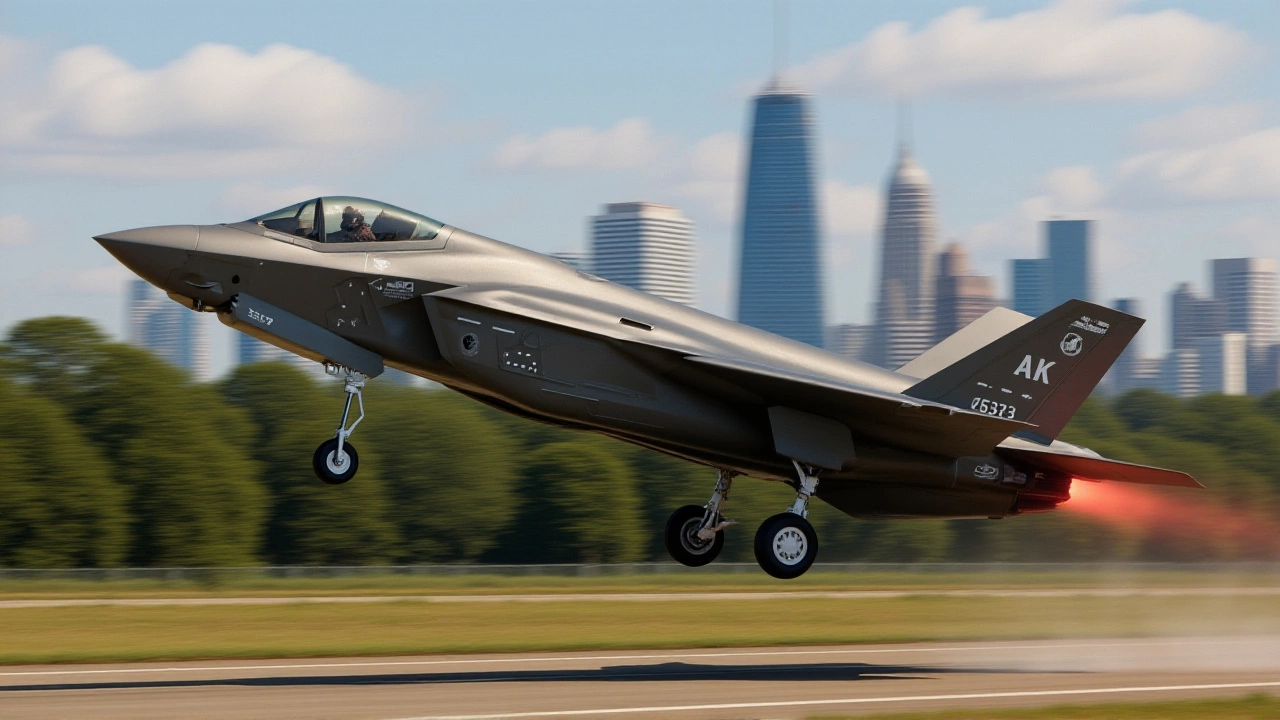When John Healey, UK Defence Minister, announced a 12‑hour joint flight near Russia’s western frontier, the move sent a clear signal that NATO isn’t standing still.
The British side flew an RC‑135 Rivet Joint electronic‑surveillance aircraft alongside a P‑8A Poseidon maritime patrol plane. A United States Air Force KC‑135 tanker kept them aloft for the full ten‑thousand‑mile loop, which began in the Arctic and skirted Belarus, Ukraine and the Baltic coast on 9 October 2025.
Background: Russian Airspace Incursions in 2025
Since early September, Russian aircraft have repeatedly crossed into NATO airspace. In Poland, military jets shot down a pair of Russian drones that drifted over the border near Poland. A few days later, a Russian drone slipped into Romania without being intercepted, prompting diplomatic protests rather than a kinetic response.
The most alarming breach occurred on 19 September 2025, when three MiG‑31 fighters entered Estonia’s airspace over the Gulf of Finland for twelve minutes. Estonia invoked NATO’s Article 4, demanding consultations because the incursion threatened its territorial integrity.
Alongside these incursions, suspicious drones have hovered near civilian airports in Germany, Norway and Denmark, briefly grounding flights and raising alarms about coordinated surveillance missions.
The 12‑Hour Joint Patrol: What Happened
Under the banner of RAF‑US Joint PatrolEastern NATO Flank, the two RAF aircraft lifted off from RAF Lossiemouth at 0300 UTC. Their route took them north over the Arctic Circle, then south along the Belarusian frontier before swinging east past the contested skies over Ukraine.
Mid‑mission, the KC‑135 refueled the RC‑135 at 0800 UTC, extending its stay over the Baltic Sea where Finnish radar picked up unusual electronic signatures. The P‑8A, meanwhile, scanned maritime traffic in the Black Sea, looking for signs of Russian submarine activity that could threaten NATO’s naval lanes.
By the time the aircraft returned to base at 1500 UTC, they had logged roughly 10,000 miles and gathered terabytes of signals intelligence, which analysts say will feed directly into NATO’s situational‑awareness picture.

Technical Assets: RC‑135, P‑8A and KC‑135
The RC‑135 Rivet Joint is a flying spy‑hub, equipped with a suite of antennas that can intercept everything from civilian communications to military radar bursts. Its crew of ten includes electronic‑signals analysts who decode the data in real time.
The P‑8A Poseidon, originally designed for anti‑submarine warfare, doubles as a high‑altitude surveillance platform. Its multimode radar and sonobuoy launchers let it track surface vessels, underwater threats, and, crucially, low‑observable aircraft that try to sneak past NATO’s early‑warning nets.
Supporting both is the KC‑135 Stratotanker, a workhorse of the US Air Force’s aerial‑refuel fleet. The tanker’s ability to refuel on the move means the British planes never had to break formation, preserving the continuity of their intelligence‑gathering run.
Reactions from NATO, Russia and Regional Allies
Within NATO, the patrol was hailed as a demonstration of “unity.” NATO Secretary‑General Jens Stoltenberg praised the coordination, noting that shared intelligence is the only way to counter a “dynamic and increasingly aggressive Russian posture.”
In Moscow, the Kremlin dismissed the sortie as “provocative posturing.” Vladimir Putin reportedly called the flight “an unnecessary escalation” during a closed‑door meeting with senior defence officials on 11 October.
Poland’s defence minister, Mariusz Wikler, said the patrol reinforced the message that “any breach will be met with a swift, coordinated response.” Romania’s foreign minister, Bogdan Aurele Markus, echoed the sentiment, emphasizing that diplomatic channels remain open but that NATO’s eyes are now wider than ever.

Implications for Eastern Flank Security
Analysts argue the patrol could shift the risk calculus on both sides. By broadcasting a visible, multinational presence, NATO may deter future incursions, but it also raises the stakes for accidental encounters.
More importantly, the intelligence haul will likely feed into NATO’s Air Policing missions over the Baltic states, sharpening detection of low‑altitude drones that have previously slipped through the radar net.
For the United Kingdom, the operation underscores a post‑Brexit defence strategy that leans heavily on joint operations with the United States, proving that distance from Continental Europe does not mean distance from alliance commitments.
Looking ahead, NATO is expected to schedule regular joint surveillance flights, rotating assets among member states to maintain a constant “electronic eye” over the frontier. The next scheduled patrol, according to anonymous sources, could involve a German Air Force Eurofighter and a French Rafale equipped with advanced SIGINT pods.
- 12‑hour joint flight on 9 Oct 2025 covering ~10,000 mi.
- Aircraft: RC‑135 Rivet Joint, P‑8A Poseidon, KC‑135 tanker.
- Purpose: intelligence gathering and NATO deterrence.
- Trigger: recent Russian airspace violations in Poland, Romania, Estonia.
- Outcome: enhanced situational awareness for NATO’s eastern flank.
Frequently Asked Questions
Why did NATO decide to send RAF aircraft near the Russian border?
The joint patrol was a direct response to a string of Russian airspace intrusions in September 2025, aiming to gather real‑time intelligence and demonstrate NATO’s collective resolve to deter further provocations.
What specific capabilities do the RC‑135 Rivet Joint and P‑8A Poseidon bring to the mission?
The RC‑135 can intercept a wide spectrum of electronic emissions, providing SIGINT on Russian radar and communications, while the P‑8A adds maritime surveillance and anti‑submarine tracking, giving NATO a fuller picture of both air and sea activity.
How did Russia react to the 12‑hour patrol?
Moscow dismissed the sortie as “provocative posturing,” with President Vladimir Putin labeling it an unnecessary escalation. No official protest was lodged, but Russian military spokespeople warned that NATO’s moves would be closely monitored.
What does this mission mean for NATO’s eastern flank security?
By showcasing interoperable surveillance and refuelling capabilities, the flight bolsters NATO’s deterrence posture, improves real‑time intelligence sharing, and may reduce the likelihood of future unauthorized incursions across the Baltic and Black Sea regions.
Will similar joint patrols become a regular feature of NATO operations?
Sources close to the alliance indicate that NATO plans to rotate joint surveillance flights among member states, integrating assets like Germany’s Eurofighter and France’s Rafale, to maintain a constant “electronic eye” over the alliance’s eastern borders.
